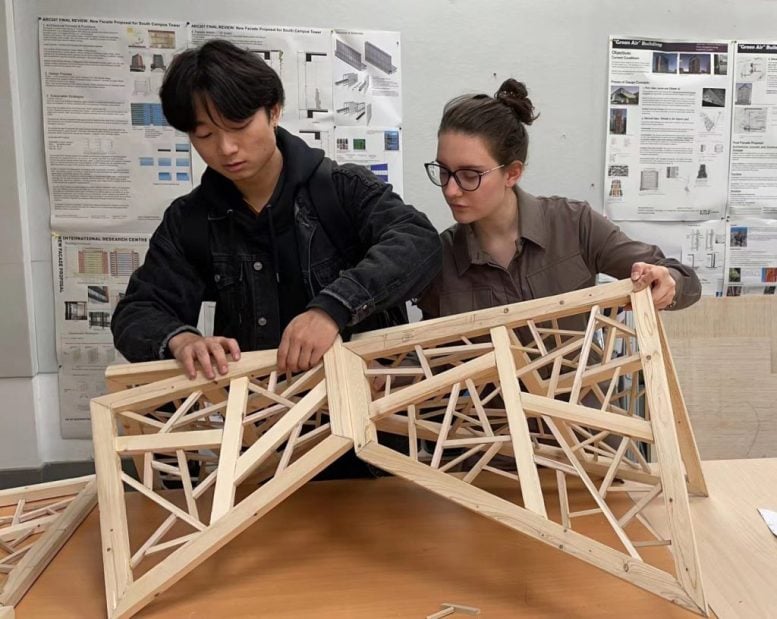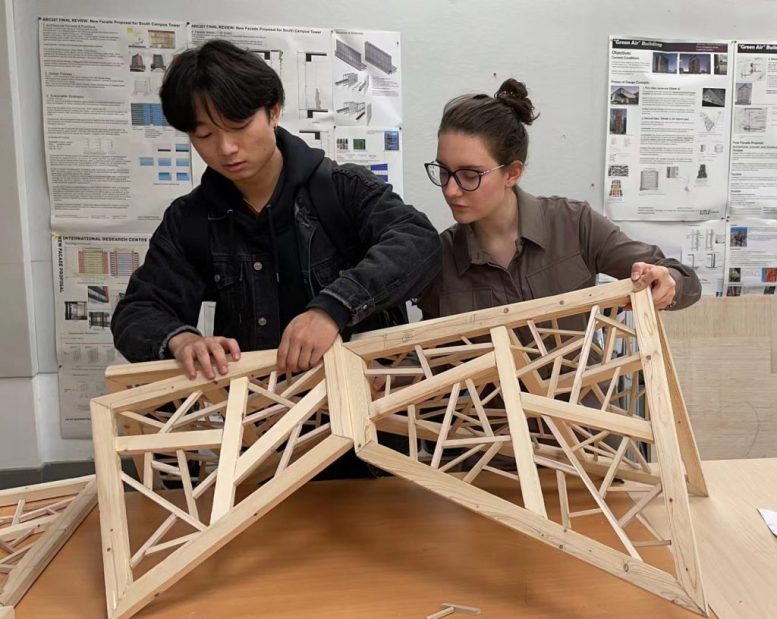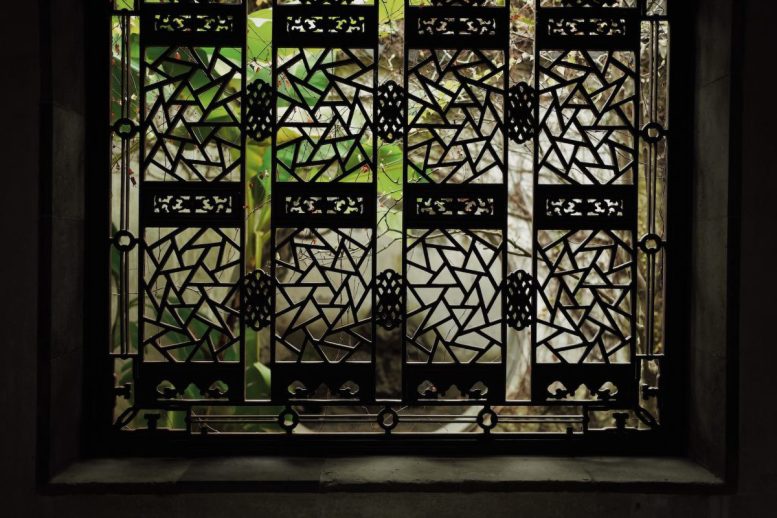
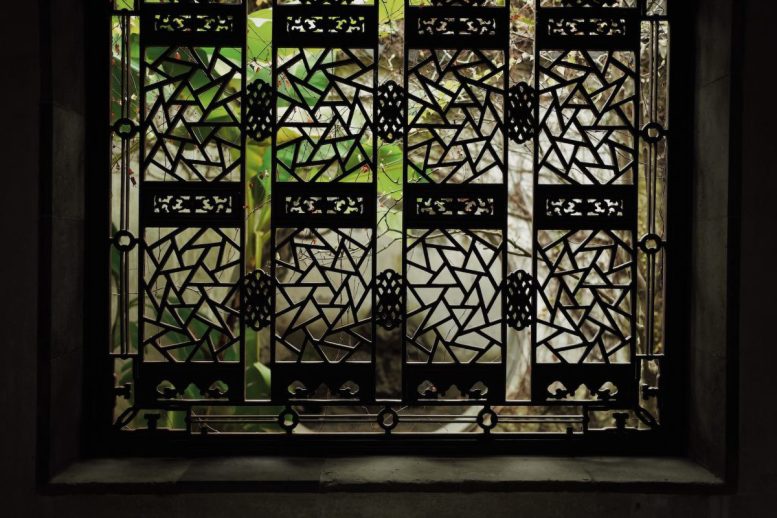
The Chinese ice-ray lattice, an intricate pattern inspired by cracked ice, symbolizes the start of spring and is widely used in traditional Chinese architecture, particularly in window designs. Ice-ray latticed window in Lingering Garden, Suzhou. Credit: Yi Qian
New research investigates the geometric characteristics of traditional Chinese window designs and their application in modern architectural projects.
Chinese ice-ray lattice, or “binglie” as it is called in Chinese, is an intricate pattern that looks like cracked ice and is a common decorative element used in traditional Chinese window designs.
Originally inspired by fragmented patterns on ice or crackle-glazed ceramic surfaces, the design represents the melting of the ice and the beginning of a thriving spring.
When Dr Iasef Md Rian, now an Associate Professor at Xi’an Jiaotong-Liverpool University’s Department of Architecture, arrived in China for the first time in 2019, he was immediately captivated by the latticed window designs in the classical gardens of Suzhou.
“Classical gardens in China strike me as very different from the Western ones, which are more symmetrical and organized,” he says. “Chinese gardens, however, have a more natural formation in their layout and design. The ice-ray window design is one of the manifestations.”
Having focused on fractal geometry in architectural design for many years, Dr Rian felt an urge to explore the beauty in the patterns.
“My mind is always looking for this kind of inspiration source, so I was motivated right away to study the underlying geometric principles of the ice-ray patterns, he says.”
Revealing the underlying rule
Dr Rian finds that the rule of creating ice-ray patterns is actually very simple.
He explains: “Take Type 1 as an example; a square is first divided into two quadrilaterals, and then each quadrilateral is further divided into two quadrilaterals. In each step, the proportions of the subdivided quadrilaterals are different, and this is how the random pattern is created using a simple rule.
“Through this configuration, Chinese craftsmen might have intended to increase its firmness so it can function as a window fence to provide protection. The random configuration of ice-ray lattices provides multi-angled connections, which transform the window into a collection of resultant forces and uniform stress distribution, in turn achieving a unique degree of stiffness.
“The microstructure of trabecular bone tissue in our own bodies serves as an excellent natural example of the potential of random lattices. It balances high stiffness, which contributes to strength, with a surprisingly lightweight structure.”
Dr Rian recently published a paper in Frontiers of Architectural Research that explores the geometric qualities of ice-ray patterns and expands the possibilities of integrating random patterns into structural designs, especially the lattice shell design, which is often used in spherical domes and curved structures.
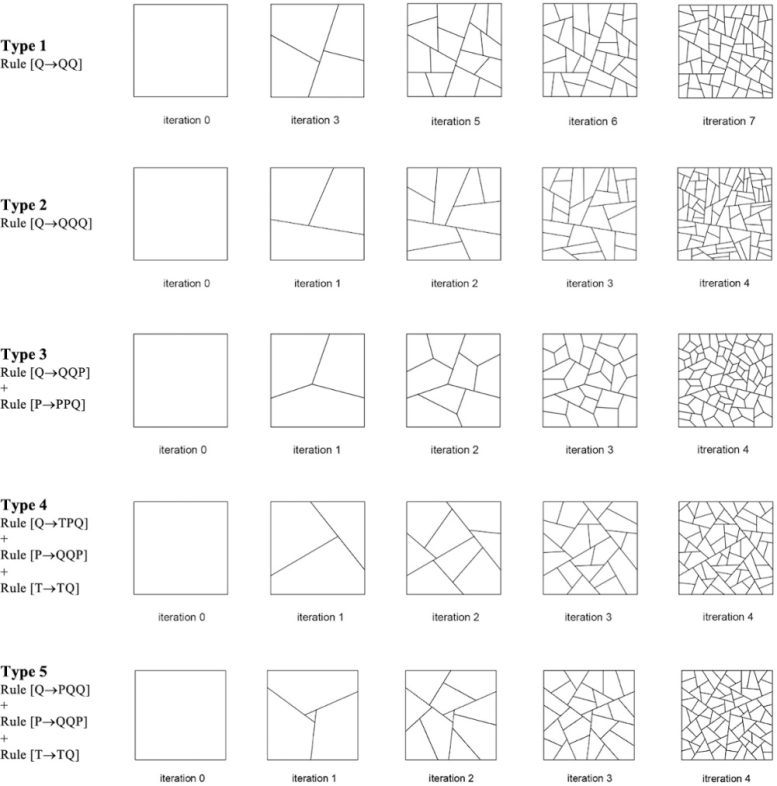
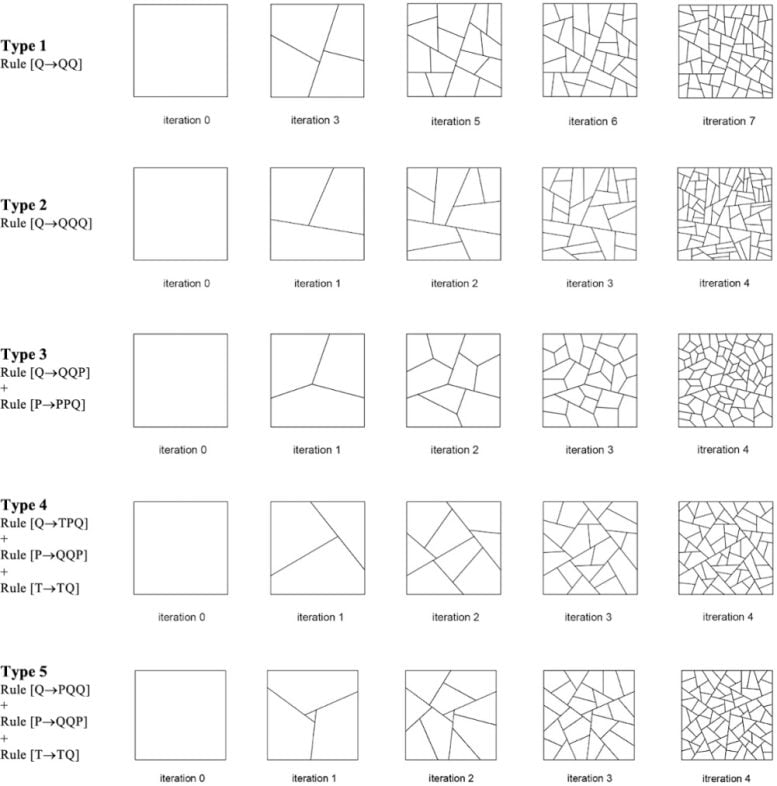
Different typologies of ice-ray lattices. P represents pentagon, Q represents quadrilaterals, and T represents triangles. Credit: Dr Rian (XJTLU)
“In my research, I developed an algorithm to model the ice-ray patterns for lattice shell designs and assessed their feasibility and effectiveness compared to conventional gridshells. These gridshells, made from regular grids, contrast with continuous shells.
“While regular gridshells perform well under uniform loads, the ice-ray lattice offers strength under asymmetric loads. Some ice-ray patterns, resulting from optimization, surprisingly provide better strength than regular gridshells under self-weight. There is also an additional aesthetic advantage when applying the ice-ray pattern to a lattice shell design.
“I extend the application of this pattern to curved surfaces, which helps to unlock its potential in the geometric, structural, and constructional aspects of lattice shell design,” he says.
Dr Rian has also integrated ice-ray patterns and complex geometries into his teaching. In 2022, he organized a workshop for students to design ice-ray lattice roofs.
He explains that learning the concept of fractal geometry can really push the students’ ideas toward a unique design.
“This is very different from what they’ve learned in high school. In learning to create this geometry system, they will also learn computational modeling and simulations. In the end, they’ll get comprehensive knowledge of advanced architectural and digital design,” he says.
Rediscovering traditional designs
To extend the research in this field, Dr Rian is investigating the effectiveness of complex geometry in various aspects like micro-scale material design and structural design.
He says: “For instance, in facade design, we usually use conventional or parametric geometry to design regular shapes. However, the random shapes designed with complex geometry can offer a more natural impression and daylight penetration.”
He encourages design students and researchers to learn from the past.
“Any traditional design has a hidden rule in it. We can now use digital technologies and advanced tools to extend and expand the knowledge of traditional craftsmanship for contemporary design.
“There are many inspirations behind the traditional designs, and those principles can really inspire us designers to make innovative designs for the future,” he says.
Reference: “Random fractal-based computational design of an ice-ray (IR) lattice shell structure” by Iasef Md Rian, 22 January 2024, Frontiers of Architectural Research.
DOI: 10.1016/j.foar.2023.12.009
The study was funded by the Xi’an Jiaotong-Liverpool University.

